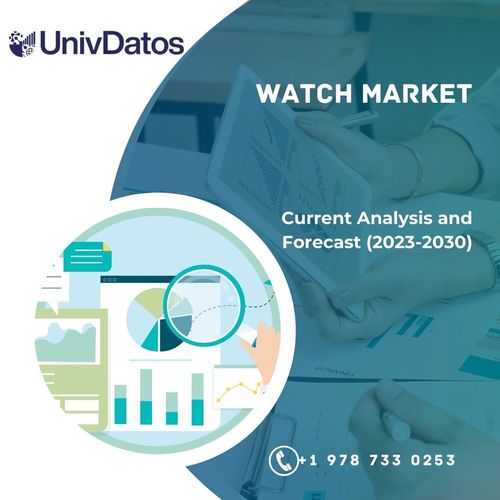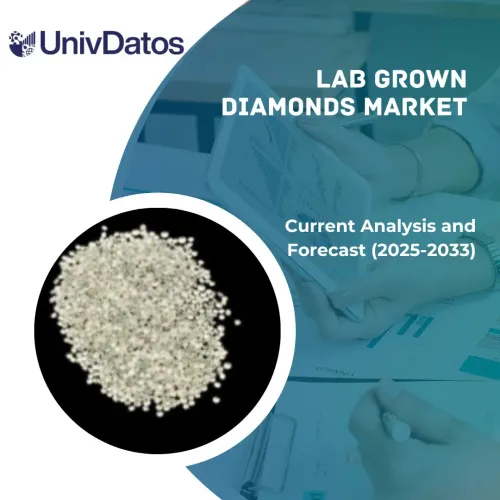- Home
- About Us
- Industry
- Services
- Reading
- Contact Us
Smart Clothing Market: Current Analysis and Forecast (2022-2028)
Emphasis on Product (Outwear, Innerwear, and Others); By End User (Military & Defense, Sports & Fitness, Healthcare, and Others); By Technology (Active Smart, Passive Smart, and Ultra Smart); Region/Country.
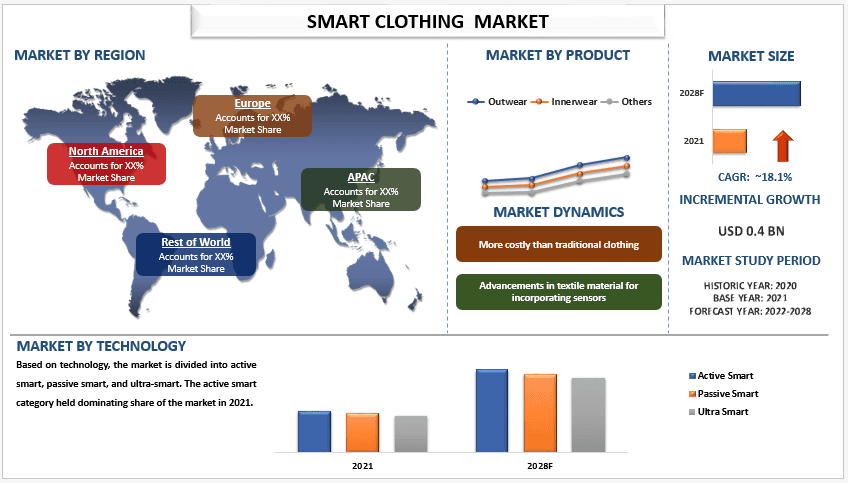
Smart Clothing Market was valued at USD 0.4 billion in 2021 & is expected to grow at a CAGR of 18.1% from 2022-2028. Smart clothing can be described as an intelligent system that senses and responds to changes and stimulants in the wear and tear terrain and conditions, such as electricity, heat, and captivation. Smart apparel has surfaced to meet consumers’ individualized requirements such as health, work, and entertainment, and has come to a hotspot in the apparel assiduity and exploration field. The market is mainly driven by factors such as the increasing demand for monitoring activities through sensors and the growing adoption of smart clothing across different industries such as healthcare, sports, military & defense, and others. Moreover, the growing awareness of the necessity for sports & fitness applications is also contributing to the growth of the smart clothing market. Additionally, the rising adoption of healthcare wearable technology is further propelling the growth of the market. For instance, according to the National Center for Biotechnology Information, nearly 30% of U.S. adults use wearable health devices. Among them, nearly half use these devices every day, with most of them willing to share the health data from their wearables with their care provider.
Some of the major players operating in the market include AiQ Smart Clothing, TORAY INDUSTRIES, INC., Vulpés Electronics GmbH, Sensoria Inc, DuPont, WEARABLE X, Myzone, Siren, Applycon, s. r. o., and Myontec. Several M&As along with partnerships have been undertaken by these players to facilitate customers with hi-tech and innovative products/technologies.
Insights Presented in the Report
“Amongst products, the innerwear category is anticipated to hold a significant share of the market.”
Based on products, the market is segmented into outerwear, innerwear, and others. The innerwear category is anticipated to hold a significant share of the market. Innerwear is in close contact with the body, which makes it an ideal location for sensors and other technologies to collect data. For example, smart bras can monitor the wearer’s heart rate and breathing patterns, while smart underwear can track changes in temperature and humidity. Moreover, the fashion industry is increasingly embracing technology, and smart innerwear represents an exciting opportunity for fashion designers to create innovative and cutting-edge products.
“Amongst technology, the ultra-smart category held significant growth in the market in 2021.”
Based on technology, the market is divided into active smart, passive smart, and ultra-smart. The ultra-smart category held significant growth in the market in 2021. The development of new and advanced technologies has made it possible for smart clothing to offer more advanced features and capabilities. For example, the use of advanced materials such as nanotechnology and graphene has enabled the creation of clothing that can monitor biometric data and provide real-time feedback. Moreover, the popularity of wearable technology, such as smartwatches and fitness trackers, has been on the rise in recent years. As more people become interested in tracking their health and fitness, there is likely to be a growing demand for smart clothing that can integrate with these devices.
“Asia Pacific region has been experiencing a significant growth rate in the smart clothing market.”
The Asia Pacific region has been experiencing a significant growth rate in the smart clothing market in recent years. One recent development in the smart clothing market in the Asia Pacific region is the increasing adoption of wearable technology by consumers. Consumers are increasingly seeking out clothing that can monitor their health and fitness, track their daily activities, and provide them with real-time information about their performance. This trend has been driven in part by the growing awareness of health and wellness, as well as the increasing availability of smart clothing products. Another driving factor for the growth of the smart clothing market in the Asia Pacific region is the increasing demand for sports and fitness-related products. Smart clothing manufacturers are catering to this demand by introducing new products that can track an individual’s performance during various sports activities. For instance, in 2022, Japanese clothing brand Uniqlo launched a range of smart jackets that can be controlled using a smartphone app, allowing the wearer to adjust the temperature and lighting of the jacket.
Smart Clothing Market Report Coverage
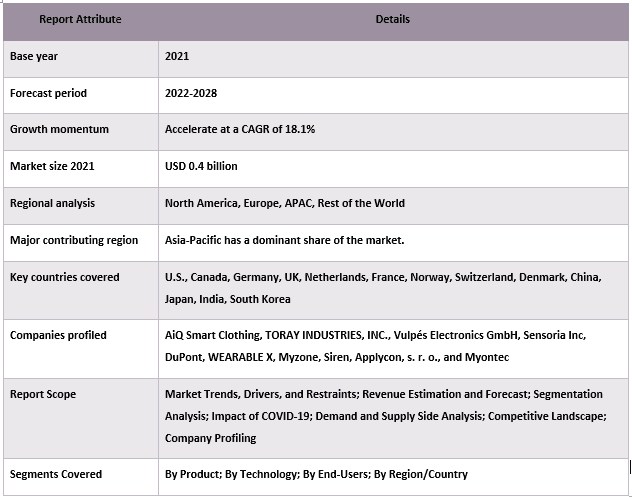
Reasons to buy this report:
- The study includes market sizing and forecasting analysis validated by authenticated key industry experts.
- The report presents a quick review of overall industry performance at one glance.
- The report covers an in-depth analysis of prominent industry peers with a primary focus on key business financials, product portfolios, expansion strategies, and recent developments.
- Detailed examination of drivers, restraints, key trends, and opportunities prevailing in the industry.
- The study comprehensively covers the market across different segments.
- Deep dive regional level analysis of the industry.
Customization Options:
The global Railway Aftermarket market can further be customized as per the requirement or any other market segment. Besides this, UMI understands that you may have your own business needs, hence feel free to connect with us to get a report that completely suits your requirements.
Table of Content
Research Methodology for the Smart Clothing Market Analysis (2022-2028)
Analyzing the historical market, estimating the current market, and forecasting the future market of the global smart clothing market were the three major steps undertaken to create and analyze the adoption of railway aftermarkets in major regions globally. Exhaustive secondary research was conducted to collect the historical market numbers and estimate the current market size. Secondly, to validate these insights, numerous findings and assumptions were taken into consideration. Moreover, exhaustive primary interviews were also conducted, with industry experts across the value chain of the global smart clothing market. Post assumption and validation of market numbers through primary interviews, we employed a top-down/bottom-up approach to forecasting the complete market size. Thereafter, market breakdown and data triangulation methods were adopted to estimate and analyze the market size of segments and sub-segments of the industry pertains to. Detailed methodology is explained below:
Analysis of Historical Market Size
Step 1: In-Depth Study of Secondary Sources:
Detail secondary study was conducted to obtain the historical market size of the smart clothing market through company internal sources such as annual reports & financial statements, performance presentations, press releases, etc., and external sources including journals, news & articles, government publications, competitor publications, sector reports, third-party database, and other credible publications.
Step 2: Market Segmentation:
After obtaining the historical market size of the smart clothing market, we conducted a detailed secondary analysis to gather historical market insights and share for different segments & sub-segments for major regions. Major segments are included in the report as product, technology, and end-users. Further country-level analyses were conducted to evaluate the overall adoption of testing models in that region.
Step 3: Factor Analysis:
After acquiring the historical market size of different segments and sub-segments, we conducted a detailed factor analysis to estimate the current market size of the smart clothing market. Further, we conducted factor analysis using dependent and independent variables such as product, technology, and end users of the smart clothing market. A thorough analysis was conducted of demand and supply-side scenarios considering top partnerships, mergers and acquisitions, business expansion, and product launches in the Railway Aftermarket market sector across the globe.
Current Market Size Estimate & Forecast
Current Market Sizing: Based on actionable insights from the above 3 steps, we arrived at the current market size, key players in the global smart clothing market, and market shares of the segments. All the required percentage shares split, and market breakdowns were determined using the above-mentioned secondary approach and were verified through primary interviews.
Estimation & Forecasting: For market estimation and forecast, weights were assigned to different factors including drivers & trends, restraints, and opportunities available for the stakeholders. After analyzing these factors, relevant forecasting techniques i.e., the top-down/bottom-up approach were applied to arrive at the market forecast for 2028 for different segments and sub-segments across the major markets globally. The research methodology adopted to estimate the market size encompasses:
- The industry’s market size, in terms of revenue (USD) and the adoption rate of the smart clothing market across the major markets domestically
- All percentage shares, splits, and breakdowns of market segments and sub-segments
- Key players in the global smart clothing market in terms of products offered. Also, the growth strategies adopted by these players to compete in the fast-growing market
Market Size and Share Validation
Primary Research: In-depth interviews were conducted with the Key Opinion Leaders (KOLs) including Top Level Executives (CXO/VPs, Sales Head, Marketing Head, Operational Head, Regional Head, Country Head, etc.) across major regions. Primary research findings were then summarized, and statistical analysis was performed to prove the stated hypothesis. Inputs from primary research were consolidated with secondary findings, hence turning information into actionable insights.
Split of Primary Participants in Different Regions
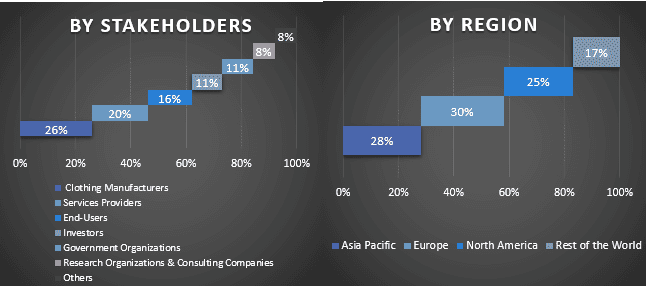
Market Engineering
The data triangulation technique was employed to complete the overall market estimation and to arrive at precise statistical numbers for each segment and sub-segment of the global smart clothing market. data was split into several segments & sub-segments post studying various parameters and trends in the areas of the product, technology, and end-users in the global Railway Aftermarket market.
The main objective of the Global Smart Clothing Market Study
The current & future market trends of the global smart clothing market were pinpointed in the study. Investors can gain strategic insights to base their discretion for investments on the qualitative and quantitative analysis performed in the study. Current and future market trends determined the overall attractiveness of the market at a regional level, providing a platform for the industrial participant to exploit the untapped market to benefit from a first-mover advantage. Other quantitative goals of the studies include:
- Analyze the current and forecast market size of the smart clothing market in terms of value (USD). Also, analyze the current and forecast market size of different segments and sub-segments
- Segments in the study include areas of the product, technology, and end users.
- Define and analysis of the regulatory framework for the smart clothing
- Analyze the value chain involved with the presence of various intermediaries, along with analyzing customer and competitor behaviours of the industry.
- Analyze the current and forecast market size of the smart clothing market for the major region.
- Major countries of regions studied in the report include Asia Pacific, Europe, North America, and the Rest of the World
- Company profiles of the smart clothing market and the growth strategies adopted by the market players to sustain in the fast-growing market.
- Deep dive regional level analysis of the industry.
Related Reports
Customers who bought this item also bought

